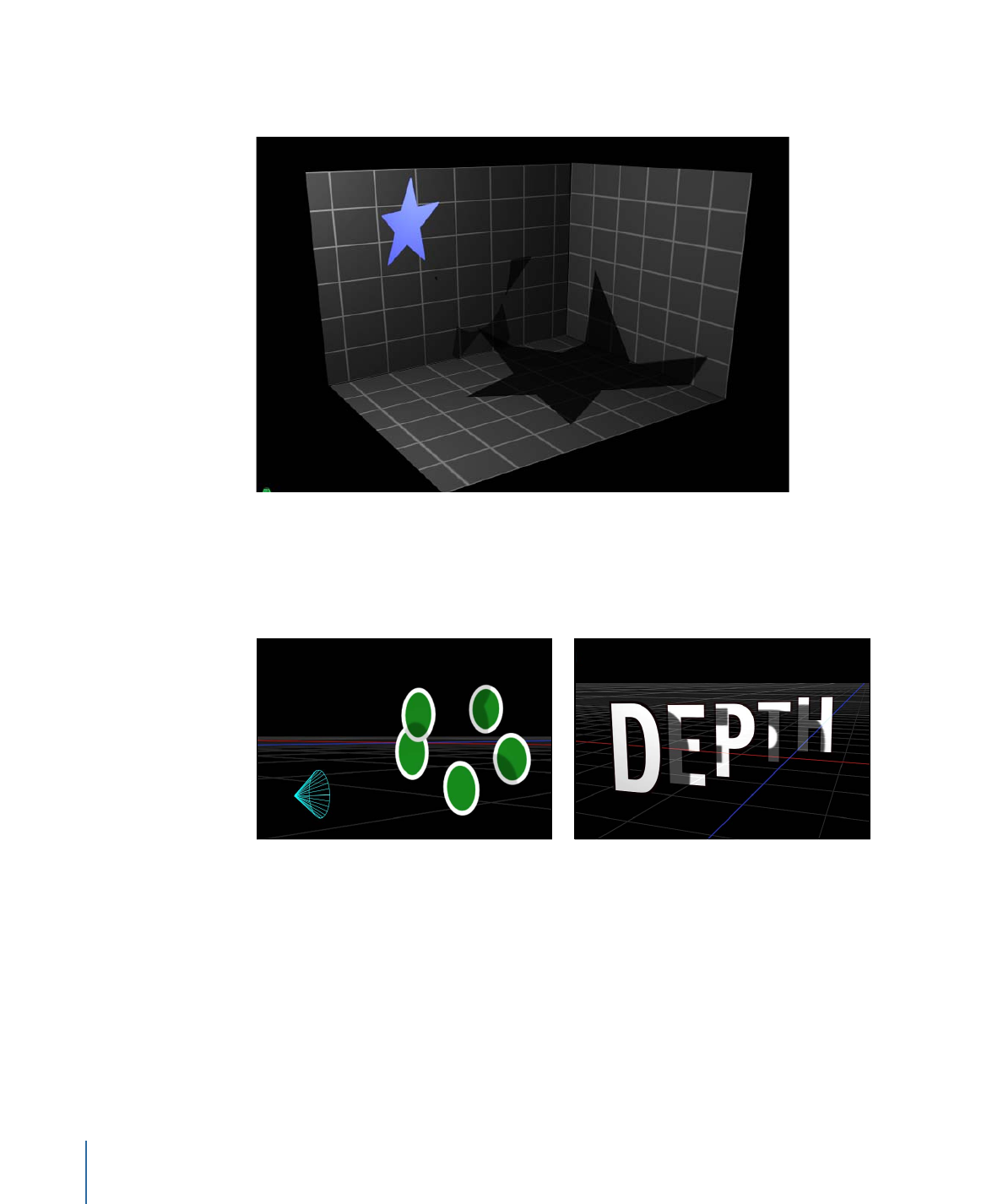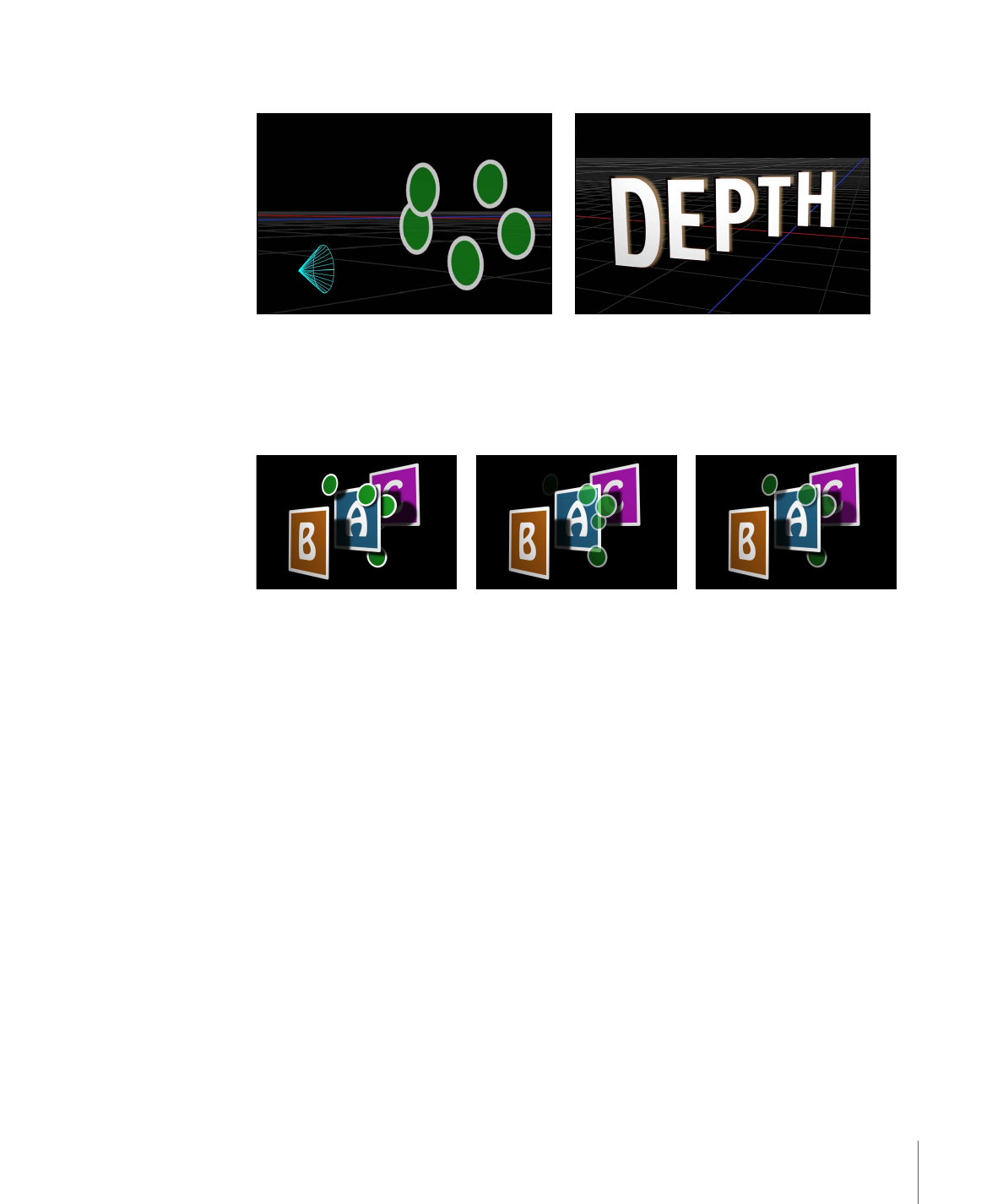
Shadows and Complex 3D Objects
When using shadows with objects such as particle systems, text objects, or replicators
that are set to 3D, shadows are cast from one part of the object onto another part. This
is called self-shadowing.
1278
Chapter 21
3D Compositing

Modifying the object in a way that causes rasterization prevents shadows from displaying.
In some cases you may be able to find another way to perform the effect that does not
require rasterization. For example, in the following images, rather than modifying the
opacity of the particle emitter, which causes rasterization, you can modify the opacity of
the particle cells and maintain the shadows.
Emitter set to 100% Opacity
Emitter set to 60% Opacity
Particle cells set to 60% Opacity
In the second figure, the layer order of the particle system is affected, and particles appear
in front of the letter A. For more about how rasterization affects shadows, see
Shadows
and Rasterization
.